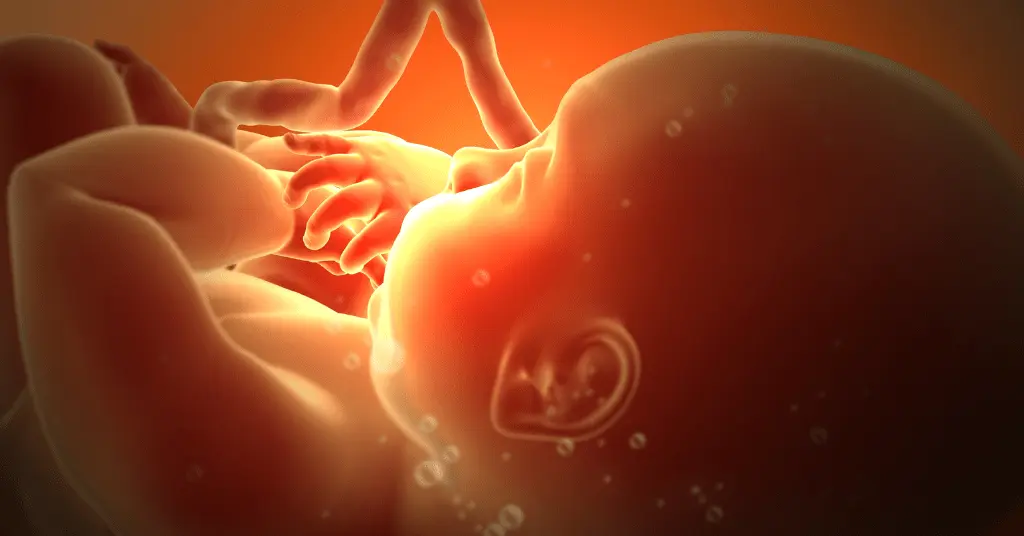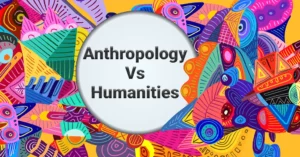AI Answer Evaluation Platform Live Now. Try Free Answer Evaluation Now
Preformationism
Preformationism, also known as the theory of preformation, is a biological theory that originated in the 17th century and posits that all organisms develop from preexisting miniature versions of themselves, called “homunculi.” According to this theory, these homunculi contain all of the necessary information for the development of a fully formed organism and simply grow in size over time.

The theory of preformation emerged in a historical context where the understanding of biology was still very limited. At the time, there were no microscopes powerful enough to observe cells or the complex processes of embryonic development, and the mechanisms of inheritance were largely unknown. This led to a variety of speculative theories about how life forms came into existence and developed.
One of the key proponents of preformationism was the Dutch physician and anatomist, Nicolaas Hartsoeker, who claimed to have observed miniature humans in the sperm of various animals. Other notable preformationists included Antonie van Leeuwenhoek, who was the first person to observe single-celled organisms under a microscope, and the German philosopher, Gottfried Wilhelm Leibniz.
Preformationism was eventually superseded by the theory of epigenesis, which proposed that organisms develop gradually from undifferentiated cells, with the final form of the organism being shaped by environmental factors as well as genetic information. The development of more powerful microscopes and advances in genetics eventually confirmed the theory of epigenesis, leading to the decline of preformationism as a scientific theory.
The main tenets of Preformationism
- All living organisms contain preexisting miniature versions of themselves, called “homunculi,” which contain all the necessary information for the development of a fully formed organism.
- Homunculi are passed down from one generation to the next through the sperm or egg cells.
- The growth of an organism is simply a process of the homunculus increasing in size.
- All organisms are fully formed at the moment of conception.
Preformationism was applied in various fields of study, including biology, medicine, and philosophy. For example:
- Biology: Preformationism influenced the study of embryology, as preformationists believed that the homunculus contained all the necessary information for the development of the organism, rather than the development being shaped by environmental factors.
- Medicine: Preformationism influenced medical theories about the causes of hereditary diseases, as preformationists believed that the homunculus contained all the genetic information needed to form a fully functioning organism.
- Philosophy: Preformationism influenced philosophical debates about the nature of life, as preformationists believed that life began at the moment of conception, rather than being gradually formed through embryonic development.
Preformationism was a scientific theory that posited that all living organisms contain miniature versions of themselves, called homunculi, which develop into fully formed organisms through growth. While preformationism was eventually replaced by the theory of epigenesis, it had significant influence on the study of biology, medicine, and philosophy in its time.
Critiques of Preformationism
Preformationism was a popular scientific theory in its time, but it was eventually criticized and ultimately replaced by the theory of epigenesis. Some of the main critiques of preformationism are:
- Lack of empirical evidence: The existence of homunculi could not be empirically proven, and observations of embryonic development did not support the theory of preformationism.
- Failure to account for environmental influences: Preformationism did not account for the role of environmental factors in shaping embryonic development or the development of an organism over its lifetime.
- Inability to explain diversity: The theory of preformationism did not account for the diversity of life on Earth, as it posited that all organisms were fully formed at conception and simply grew in size.
- Conflict with observable phenomena: The observation of hybrid organisms that did not resemble either parent conflicted with preformationism’s idea of fully formed homunculi being passed down through sperm or egg cells.
These critiques challenge the basic tenets of preformationism, as they contradict the idea that the homunculus contains all the necessary information for the development of the organism and that organisms are fully formed at conception.
The critiques of preformationism have influenced scientific understanding of development by leading to the development of the theory of epigenesis. The theory of epigenesis posits that organisms develop gradually from undifferentiated cells and that the final form of the organism is shaped by environmental factors as well as genetic information. This theory accounts for the role of environmental factors in shaping embryonic development and the diversity of life on Earth. It has been supported by a wealth of empirical evidence, including observations of embryonic development and the study of genetics.
The Legacy of Preformationism
Although preformationism was ultimately rejected as a scientific theory, its legacy has had a significant impact on scientific and philosophical thought over time.
In science, preformationism served as a starting point for the study of embryology and genetics. While it was eventually replaced by the theory of epigenesis, the idea that the genetic material of an organism is passed down from one generation to the next remains a fundamental principle in genetics.
In philosophy, preformationism had a lasting impact on debates about the nature of life and the soul. Preformationists believed that life began at the moment of conception and that the homunculus contained all the necessary information for the development of the organism. This belief influenced philosophical debates about the nature of the soul, as preformationists believed that the soul was present in the homunculus from the moment of conception.
Today, preformationism continues to influence contemporary scientific and philosophical debates. For example, some contemporary discussions of epigenetics and the role of the environment in shaping genetic expression can be traced back to critiques of preformationism’s failure to account for environmental factors. Similarly, debates about the nature of the soul and the beginning of life continue to be influenced by preformationist ideas.
In conclusion, while preformationism was ultimately rejected as a scientific theory, its legacy has had a lasting impact on scientific and philosophical thought. Its influence can be seen in contemporary debates about genetics, embryology, and the nature of life and the soul.
Contemporary Relevance
While preformationism was ultimately replaced by the theory of epigenesis, some of its ideas remain relevant to contemporary issues in biology, philosophy, and related fields.
In biology, recent research on epigenetics and gene expression has drawn on preformationist ideas about the role of genetic information in development. For example, studies have shown that environmental factors can have a significant impact on the expression of genes, which challenges the preformationist idea that genetic information is fixed and fully formed at conception.
In philosophy, preformationist ideas about the beginning of life and the nature of the soul continue to be relevant to contemporary debates. For example, discussions about the ethical implications of reproductive technologies and embryo research often draw on preformationist ideas about the sanctity of human life from the moment of conception.
Overall, while preformationism is no longer a widely accepted scientific theory, its ideas continue to influence contemporary discussions and research in biology, philosophy, and related fields. By examining the legacy of preformationism, researchers can gain a deeper understanding of the historical and conceptual foundations of contemporary debates and scientific inquiry.
Comparison with other theories of Development
Preformationism, epigenesis, and preformationism are three distinct theories of development that offer different explanations for how organisms develop from fertilization to adulthood.
Preformationism posited that the homunculus contained all the necessary information for the development of an organism and that organisms were fully formed at conception. In contrast, epigenesis posits that organisms develop gradually from undifferentiated cells and that the final form of the organism is shaped by both genetic and environmental factors. Preformationism and epigenesis offer fundamentally different explanations for how organisms develop, with preformationism emphasizing the role of genetic information and epigenesis emphasizing the role of environmental factors.
Preformationism and epigenesis differ in other ways as well. For example, preformationism posits that development is a linear and deterministic process, while epigenesis allows for more flexibility and variation in the final form of an organism. Additionally, preformationism places a greater emphasis on the role of the individual in development, while epigenesis emphasizes the role of the environment.
Preformationism may have influenced the development of epigenesis and other developmental theories by providing a starting point for understanding the role of genetics in development. While preformationism was ultimately replaced by the theory of epigenesis, its focus on the role of genetic information in development paved the way for further research into the genetics of development.
Overall, while preformationism, epigenesis, and preformationism offer different explanations for how organisms develop, they all contribute to our understanding of the complex processes involved in development. By examining the similarities and differences between these theories, researchers can gain a deeper understanding of the mechanisms that shape the development of organisms.
Conclusion
In summary, preformationism was a historical theory of development that posited that organisms were fully formed at conception and that the homunculus contained all the necessary information for development. Preformationism was later replaced by the theory of epigenesis, which posited that organisms developed gradually from undifferentiated cells and that the final form of an organism was shaped by both genetic and environmental factors. While preformationism is no longer a widely accepted scientific theory, its legacy has had a lasting impact on scientific and philosophical thought. Its influence can be seen in contemporary debates about genetics, embryology, and the nature of life and the soul.
For those interested in learning more about preformationism, there are several recommended resources. “The Theory of Preformation” by Peter Anstey provides a detailed historical overview of the theory and its influence on the development of modern biology. “Preformationism: the Biological Tradition and its Uses” by Jan Sapp examines the legacy of preformationism and its influence on contemporary debates about the nature of life and the soul. “Embryos, Galaxies, and Sentient Beings: How the Universe Makes Life” by Richard Grossinger explores the relationship between preformationism, embryology, and cosmology.
References
- Anstey, P. (2011). The theory of preformation. Stanford Encyclopedia of Philosophy. Here
- Sapp, J. (1987). Preformationism: The Biological Tradition and Its Uses. Oxford University Press.
- Grossinger, R. (2011). Embryos, galaxies, and sentient beings: How the universe makes life. North Atlantic Books.
Suggested Articles
- Theories of Evolution
- Oparin Haldane Hypothesis
- Theory of Recapitulation or Embryolofical Parallelism
- Theory of Special or Divine Creation
- Modern Synthetic Theory of Evolution
- Theory of Use and Disuse
- Theory of Contiuity of Germplasm
- Theory of Epigenesis
- Theory of Isolation
- Theory of Spontaneous Generation
- Neutral Theory of Evolution
- Theory of Mutation in Evolution
- Out of Africa Theory
- Pangenesis Theory



